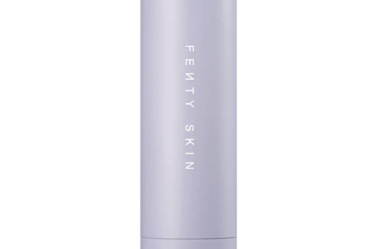When crypto-influencer Gmoney launched 9dcc in 2022, there was no roadmap for what he dubbed the first crypto-native luxury brand.
The brand was built on the blockchain, where every product would be linked to a digital twin that would serve to authenticate it as well as offer abilities still to be explored.
The crypto market was already cooling when 9dcc launched, and countless blockchain start-ups went bust. But two years on, 9dcc has expanded from a single T-shirt into a broader collection including denim, ballcaps, hoodies, tailoring and outerwear, while Gmoney and his team have been experimenting with what those other abilities can entail.
“The real fun stuff is going to be creativity around engagement and connecting better with your customer after that point of sale,” he said.
The brand has done everything from hosting weekly games for customers to holding in-person meet ups, allowing people to interact with each other and their 9dcc products. If someone taps the NFC chip in another person’s 9dcc item, for example, they can collect that person’s “Nine,” basically a digital token representing them. The brand has also staged larger events like treasure hunts with prizes.
Gmoney believes, with the right incentives, brands can motivate consumers new and old to interact with them, and that on-chain products are the way to make that happen. 9dcc even introduced a white-label platform, Powered by 9dcc, for other brands to piggyback on its infrastructure.

There are growing signs such products and services could soon be in demand again. Donald Trump pledged during his campaign to make the US the “crypto capital of the planet.” Already the value of Bitcoin has surged to record highs. If the momentum persists, it’s likely to reignite activity from brands, according to Neil Mullins, chief executive of Mojito, a web3 platform and advisory firm.
“You can see some of it in the last week or so,” Mullins said. “There’s a lot of interest once again in the space.”
Gmoney agreed.
“I expect over the next couple of weeks probably, especially leading into Q1 of next year, that interest will start picking up, because obviously price leads a narrative,” he said, referring to the rising price of Bitcoin and some other cryptocurrencies.
A resurgent crypto industry could generate a lot of wealth that’s historically been directed to high-end goods, giving brands plenty of incentive to court those shoppers, particularly as the luxury industry battles a slowdown. That motivation would add to another force pushing brands towards blockchains: regulation.
The EU has said that within this decade it will require many items to have their own digital product passport, a unique digital identity aimed at fostering traceability and transparency. Tens of millions of luxury items now have their own blockchain-based DPPs, according to the technology companies powering the efforts, with brands investigating what other capabilities they can add to get the most value from their DPP investments.
But both Gmoney and Mullins said any new web3 projects by fashion brands are likely to look different than during the NFT mania of 2020 and 2021. Back then, companies were rushing to beat their competitors to market with projects, leaving some a bit half-baked. Now they’re likely to be more measured and selective, thinking about what utility the technology can offer. That technology is also more likely to be hidden in the background after many brands learned that their backend infrastructure isn’t a selling point for most consumers. Mullins compared blockchain to Amazon Web Services, the e-commerce giant’s cloud computing platform.
“You’re not going and shopping with a brand and you’re like, ‘Sick, AWS. We love that,’” he said.
Since its clothes are what people are primarily buying, 9dcc hired an experienced creative director, Brandon Sun, to lead design. But beyond that, what the team has been focused on is making the technology seamless and invisible — you no longer have to create or connect a crypto wallet to claim a product, for instance — while learning how to get its customers regularly engaging with it. Every company talks about how the most engaged shoppers tend to spend more. In 9dcc’s case, Gmoney said highly engaged customers typically spend about 2.5 times as much.
To promote engagement, one method the brand has found especially effective is what it calls “quests.” In April 2023, it held a treasure hunt around New York where, over the course of three days, participants had to check in at several locations, such as the Adidas Originals store in SoHo, to qualify to win a variety of prizes. It required 9dcc staff on the ground, however, meaning it wasn’t something the brand could scale up. When 9dcc did it again in Singapore, it geofenced the locations so no staff was needed. Participants’ phones could decipher where they were and did all the work.

“The thing that we were most excited about was being able to really push traffic in stores,” Gmoney said. “One of the locations was Starbucks. If you showed up at that specific Starbucks between 1pm and 3pm and tapped your [9dcc] product, you got an instant gift card that was instantly redeemable.”
Gmoney imagines brands similarly being able to drive customers to their stores or those of retail partners. They could also use the data they gather on customer interactions to, say, reward them for participating regularly or entice them to shop.
One question is whether a brand can actually convince people to engage who otherwise wouldn’t, or if it’s only a brand’s most loyal fans destined to turn up to such events. In Gmoney’s view, it depends on the incentives a brand offers and how creative it is. For the Singapore event, participants were competing to win an NFT from his collection that was going for about $10,000 at the time. This prize was motivation enough for 9dcc’s audience, but might not be for the average Hermès customer. Each brand would need to figure out what motivates its audience.
The technology, in other words, doesn’t create the engagement. That’s still on the brands to do.



